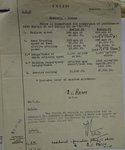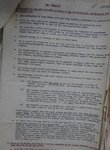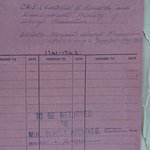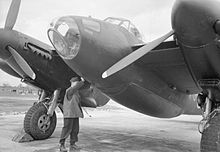Ross Sharp
Recruit
- 9
- Jun 18, 2016
The de Havilland Mosquito is an aircraft I am currently heavily involved with. As Director of Engineering and Airframe Compliance, The People's Mosquito Ltd (a Registered Charity, No 1165309), we are converting the remains of an NF.36 to an FB.VI (wing ribs are being cut in New Zealand, as we speak, see The People's Mosquito).
It is quite true that the loss rate/per sortie was vastly improved compared to the Lancaster ('Bomber' Harris stated that the cost of a Lancaster and the training of its crew, could be recouped in terms of damage to the enemy in THREE sorties - provided they dropped their bomb on the target on the third sortie!) Yes, the bomb load options were as laid out earlier in this string (although I would have prefered to travel on 'Platforms 1, 2 or 3' to the Big City in the comfort of a pressurised Mk. XVI with its two-stage Merlins, than the earlier B. Mk IV).
The value of the LNSF was not just in its low loss rate, or its bomb load, or even the smaller crew numbers, but the fact that it could operate when the Main Force could not, due to weather conditions. Not only that, but the superb low-level marking techniques by our friends in No 627 Sqn (please go on our website to see them in action, in COLOUR) meant that the Lancasters of No 5 Group were turned into a precision night bomber force in the later stages of the war (627 could mark the four corners of a football field for you). However, you would still need a proportion of heavy bombers (Harris wanted an all-Lancaster Main Force by 1946) to carry large loads, including the Tallboy and Grand Slam, or the 8,000 HC or 12,000 HC blast bombs. If you could find enough good Canadian Yellow Spruce (and only one tree in 10 is good enough for the main spar) and enough balsa wood (it took a whole Ecuadorian forest, as it is), then I would have gone with a 60/40 mix 'heavies' and Mossies; please remember that the superannuated Stirlings, and the Hastings, also supported the Resistance movements throughout Europe and were excellent heavy glider tugs, etc.
We have chosen to restore RL249 as an FB.VI, but a bit of 'badge engineering' and some care additions/subtractions will allow us to change her into an FB.40, T.27, T.III, FB.XVIII, prototype Sea Mosquito and many other versions. The potential colour schemes and individual markings run into the hundreds
Please watch out for our stand at major U.K. air shows (we were at RIAT, Cosby, Sunderland, Cosford and Duxford this year) and consider supporting us, either by purchasing an item from our online store, or, even better, joining our new People's Mosquito Club bit.ly/TPMClub The Club has its own newsletter, its own website with exclusive articles on Mosquitoes, Club 'swag' (the badge is rather tasteful) and no less than five forum strings. All in all, good value at £25 a year!
There, commercial over......
Cheers
Ross Sharp
The People's Mosquito






